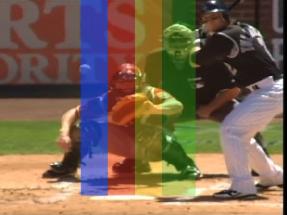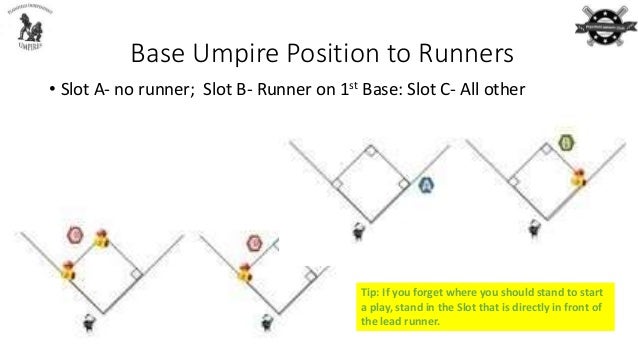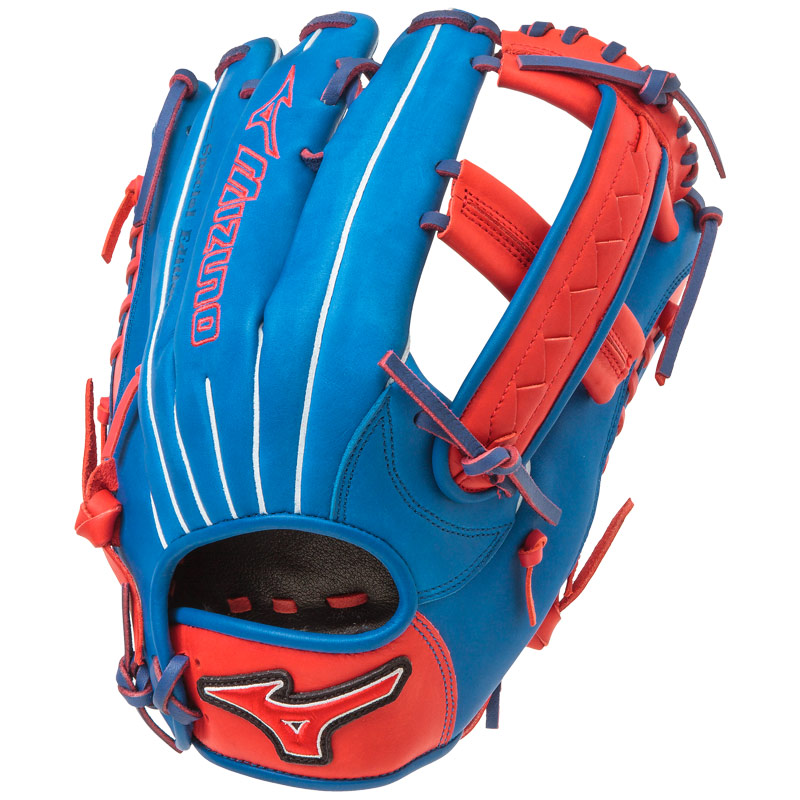Umpire Slot Position
Catcher sets up blocking the slot The umpire must see the pitch from the time it leaves the pitcher’s hand until it crosses the plate. Three major impediments to this happening are: 1) a catcher who takes away your slot and 2) a catcher who moves into the umpire’ vision at the last second, and 3) a batter who crowds the plate. In a recent conversation with 10.5-year MLB Umpire Veteran Marvin Hudson during Spring Training in Fort Myers, we discussed this very issue. His advice is simple, 'You want to get in the slot and get as low as you can.' Slot Position If you don't know, the slot is the position in-between the catcher and the batter. Asking all umpires Setting up in the slot position is of course the best place to view and call balls and strikes but as a newer umpire I’m curious where the best position is to get set when the catcher also sets up on the inside portion of the plate (righty or lefty batter)?
Start Positions (two-man)
In this article we discuss the start positions for the base umpire on both the small and big diamonds. But before we go any farther, we need to define some terms:

- Small diamond. Baseball diamond with 60-foot base paths and 46-foot pitching distance. This small field is common for leagues whose players are 12 years old and younger.
- Big diamond. All fields larger than the 'small diamond,' up to and including the regulation field with 90-foot base paths and pitching distance of 60'-6'.
- U1, U2, etc.. Abbreviations for the base umpires. In the two-man system there is only one base umpire, of course: U1. With three- and four-man crews, the number signifies their start-position with no runners on base – U1 near first base, U2 near second base, and U3 near third base. In the three-man system, you have two base umpires, U1 and U3.
- PU. Plate umpire.
On the Big Diamond

There are four start positions on the big diamond, labled A, B, C, and D. For now just ignore D because it does not come into play in the two-man system.
Notice that there are two B positions – one outside the bases and the other inside. We'll talk more about this below, but in brief, you occupy the B position outside the base path with no runners on base. Of course, you can only be in the B position with no runners on base if you are working a four-man crew, so it will not come into play in two-man mechanics.
On the Small Diamond
Similar to the big diamond, are four start positions on the small diamond; these are also labled A, B, C, and D. Again, ignore D because it does not come into play in the two-man system.
Plate Umpire Slot Position
Figure 2. Start positions on the small diamond. Run your mouse/cursor over the image to see the fielders superimposed.
Notice that in contrast to the big diamond, all of the start positions are outside of the basepath. The small diamond is just too small to accommodate umpires grouped inside the base paths.
You have to learn this:
You simply have to learn and know instinctively which base-runner configurations require you to be in which start positions. Fortunately, this is really easy to learn:
| With no runners on base | U1 starts in A |
| With a runner on first only | U1 starts in B |
| With runners on first and third | U1 starts in B |
| ALL other configurations | U1 starts in C |
Important: These start positions are the same for both big and small diamond.
Rotations from the Start Positions
The instant a ball is put into play, every umpire on the field goes into motion. The direction in which the umpire goes is determined by that nature of the batted ball – specifically, whether it is a batted ball to the infield, a line drive to the outfield, a fly ball to the outfield, a shot down the foul line, and so forth. Both umpires go into motion, and their movements are coordinated. The coordinated action of the umpires in response to the batted ball is called their rotation.
We discuss these rotations in detail in the next article in the series, The Basic Rotations.

There is nothing quite like the feeling of walking off the field after a stellar performance behind the plate. But having a great game calling balls and strikes — and executing impeccably on everything else that goes with the plate umpire position — is not easy.
Umpire Slot Position
It takes focus and attention to proper mechanics. Here are five things necessary for doing your best work as plate umpire:
Umpire Slot Position
Getting in the slot

It probably goes without saying that if you don’t have the best vantage point with which to judge pitches as the catcher catches them, you can’t expect to be at your best calling balls and strikes. Although most of us learn very early that the space between the inside shoulder of the catcher and the batter is where you always need to be, it is surprising how many good umpires don’t get enough into that slot position to see all the pitches.

I recall learning as a young umpire that you need to be in the slot so you can see the pitch that hits the outside corner at the knees. However, I believe more umpires miss the pitch that hits the inside corner at the knees because they are not sufficiently up into the slot to see that pitch. They get blocked by the catcher’s body and end up having to guess on its location when it is caught. The skill level of the catcher will determine how close you can get. Many lower level catchers will make it impossible for you to get too close without constantly making contact with them as they come up to throw.